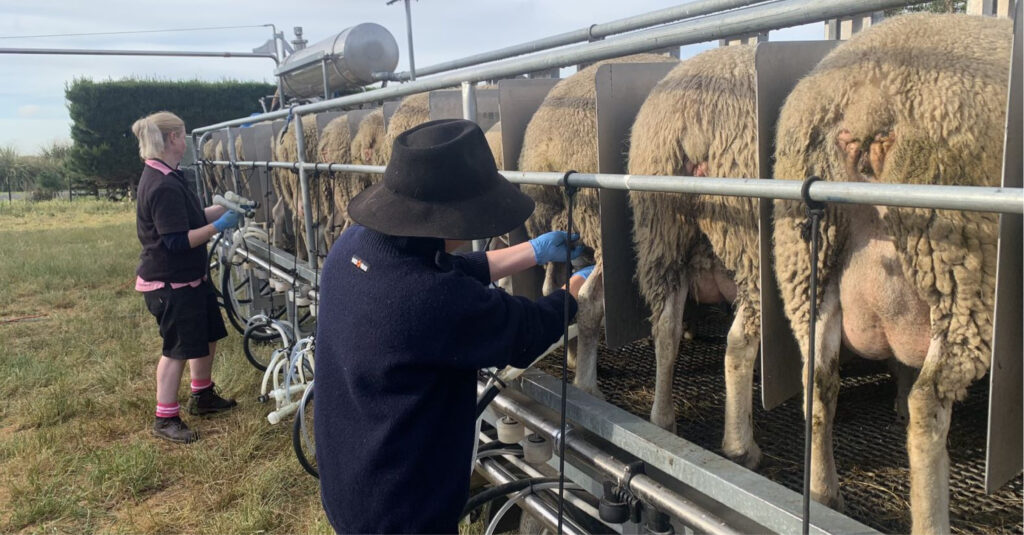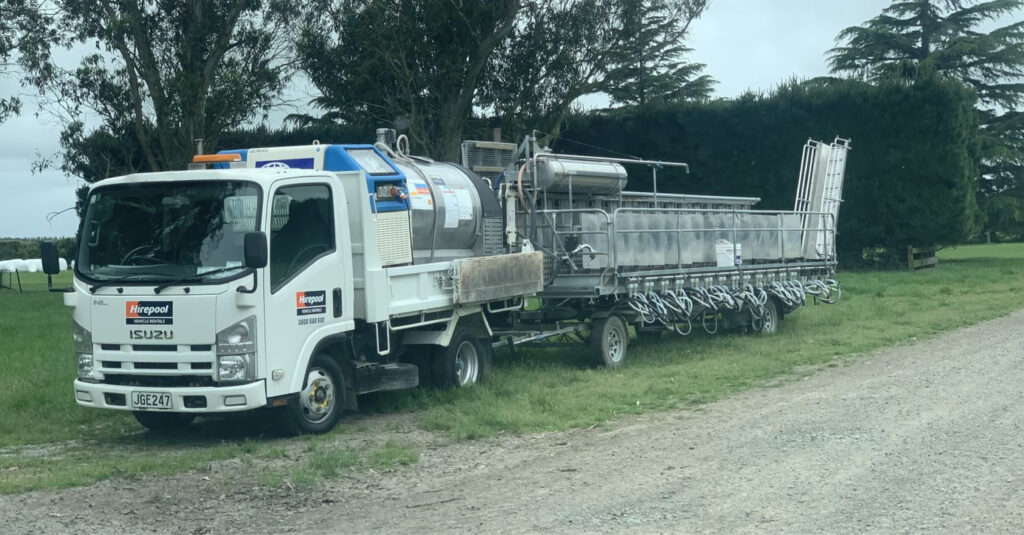Joe Catherwood has farmed sheep for meat and wool throughout his farming career. Now the central Canterbury farmer is adding milk to his farm’s output.
Catherwood farms 320ha at Charing Cross, Central Canterbury, a property his father purchased in 1953, and which Joe and his brother John took over in 1976. Joe bought John’s share of the farm in 2000.
For much of their career they have been clients of PGG Wrightson Wool, and until a few years ago the farm carried only sheep.
When irrigation from the Central Plains Water scheme became available, Catherwood also began growing crops.
“Although I milked our house cow for 10 years after I left school, cows don’t interest me. I prefer sheep.
“When the irrigation scheme was built we needed to pay for it, so I needed to increase my returns. I’ve always kept a few pet lambs, and in 2017 started milking some of my ewes, freezing their milk to feed to the following year’s pet lambs,” says Catherwood.
Initially planning to milk 50-odd sheep, seven years later his mob of milking ewes now numbers almost 1000, and for the last three seasons he has supplied Kirwee-based Sheep Milk NZ.
“What we do is still conventional farming. I want ewes to raise fat lambs, big enough to send away in November. We aim to gross around $500/ewe: producing 1.5 lambs each, feed and wean the lambs, then we milk the ewes for around 100 days to increase those returns.”
Unlike many other sheep milk operations, Catherwood leaves the lambs with his ewes until weaned, or heavy enough to kill at 17-18kg.
“Some farmers take the lambs off after three days, giving the ewes around 200 days in milk. If you hand-rear the lambs, you have to buy in milk powder, then you struggle to put enough condition on your lambs to send them away by December.
“With the milk genetics in the ewes, raising robust lambs is also more difficult. I prefer not to complicate it,” he says.

Experimenting with genetics has helped increase milk production.
“East Friesian is the standard breed for milking sheep overseas, though they are scatty and not that easy to deal with. I have created a Catherwood Cross by putting some Texel, Romney, Poll Dorset and Composite breeds across the flock to give them a bit more condition.
“Our Catherwood Cross milking ewes have good udder conformation, are hardy, and produce a fat lamb. An easy milking sheep needs a bare belly, a bare udder, and a bare rear end, though going too far with the shedding genetics can compromise the wool.
“We still want wool, though we also like the sheep nice and clean underneath, making them easier to milk.”
To help milk his flock, Catherwood calls in LM Alamae, who owns Almae Sheep Stud, plus his farm manager Dudley Cridge, both keen advocates of sheep milk.
“If you drink a glass of cow milk it takes around four hours to digest, a long time to wait for the nutritional benefit, and one of the reasons dairy products can affect gut tolerance for some people,” he says.
A glass of sheep milk takes around 40 minutes to digest, providing a combination of proteins, fats, vitamins and minerals that help support gut health, a healthy heart and reduced cholesterol levels.
The human body is better attuned to sheep milk, which is naturally A2 and naturally homogenised.
“Farming sheep is gentler on the environment than a dairy farm, with less nitrogen leeching and greenhouse gas emissions. When a sheep pees it doesn’t create a urine patch the way a cow does, so unlike a dairy cow, the nitrogen doesn’t go through to the ground water.
“One litre of sheep milk accounts for around one-third of the carbon footprint of the same quantity of cow milk.
“In addition, AgResearch projects found the sheep genetics associated with low methane production correspond to higher productivity for both meat and milk.”
Scanning suggests this is due to the composition of the rumen in animals from those favourable genetics.
“Also the percentage of total solids in sheep milk is much higher than the equivalent in cow milk, which is what a farmer is paid for: total solids, so why grow water? It requires more water to create the same amount of protein from cow milk than from sheep milk,” says Alamae.
While others milk sheep twice a day, Catherwood’s team do it once, using a 16-bale mobile herringbone milking unit with a 1000 litre vat and generator mounted on a custom truck anywhere on the farm.
“We start just before dawn and it takes around 15 minutes to milk 16 ewes. It’s a low-stress job and the ewes come through in the same order each morning. The plant can be run by one milk harvester, or up to three. If I’m on my own my dog Tippi makes sure the ewes walk onto and off the plant without barking or stressing the ewes,” says LM.

Catherwood’s farm manager, Dudley Cridge, developed a pasture mix for the milking mob. Rather than putting them on just lucerne or just ryegrass, that pasture mix includes lucerne, red clover, white clover and plantain, markedly increasing both the overall production and the quantity of milk solids.
Although Catherwood’s flock have some East Friesian in their genetics, Alamae is keen on the original Dutch breed, the Zwartble.
“The Zwartble is the original milk, meat and fibre sheep. In the 1800s farmers selected for white sheep in the flocks and the East Friesian breed, which produced less meat, lower quality fibre and larger milk volumes, was born.
“East Friesians are a more fragile breed and are traditionally raised inside in sheds, meaning their lambs can struggle outdoors in the NZ winter.
“More hardy than East Friesians, Zwartbles are a mainly black sheep, tall, naturally polled, with a white blaze, white socks and a white tip on the tail.
“They are excellent mothers, docile, produce a fat lamb, able to raise triplets and produce plenty of total solids in their milk,” she says.
Alamae has a small number of Zwartble sheep, and the genetics have good characteristics for the system Joe is developing.
Doug McKay has been Catherwood’s PGG Wrightson Wool rep for the past 25 years, taking all his wool, which hasn’t changed since he started milking.
“It’s great to see Joe, Dudley and LM leading the way with some fresh thinking to improve their productivity. If this comes off and others follow, we could see sheep returning to the Canterbury Plains in greater numbers,” he says.
Greater numbers are indicated by Sheep Milk NZ owner Matt Jones, who milks his own sheep, takes milk from Catherwood and a handful of other suppliers, and produces fresh sheep milk and cheese for sale online and through supermarkets nationwide.
His plans include a drying plant to create milk powder, which will require a significant increase of Canterbury’s total tally of milking sheep.
Although the prospects for sheep milk might be bright, Catherwood is not getting carried away.
“I enjoy sheep and enjoy doing something different with them. However, there’s a fair amount of labour and cost involved, and while we are breaking even, it’s not yet a big money-making thing, though who knows what the future might bring?”
Catherwood’s sheep milk is used in Jones Family Farm cheeses, which can be found at New World, Pak’n’Save and Four Square supermarkets.
This article first appeared in our sister publication, Dairy Farmer.










